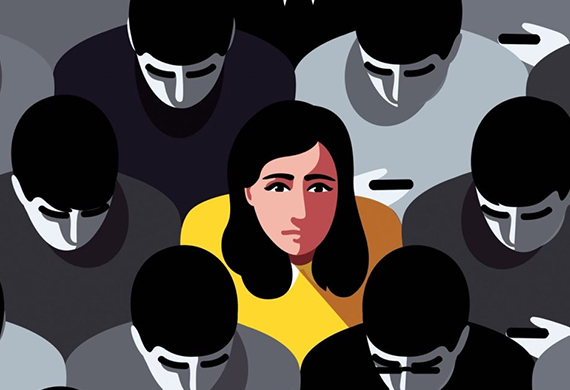
Indian Women and the Wide Wage Discrimination as explained by Oxfam's India Discrimination Report 2022
By: WE Staff
When individuals with comparable abilities are treated differently in the workplace based on their identity or social origins, this is known as discrimination. There have been surprisingly few attempts in India to measure the level of discrimination and how it affects the lives of marginalised people.
In order to better understand inequality and discrimination in the country's access to jobs, income, health, and agricultural credits, Oxfam India undertook a thorough examination of government data from 2004 to 2020.
Decomposition, a statistical technique, was used in the analysis to better understand how different social groups' experiences with work, salaries, health, and access to agricultural financing differed. This has aided us in quantifying the discrimination marginalised communities have experienced from 2004–2005 to 2019–2020.
What the India Discrimination Report Says:
Women in India will face discrimination in the workplace despite having the same educational background and professional experience as men due to cultural and company stereotypes. The study concludes that discrimination is to blame for all of the job inequality experienced by women in rural areas and 98 percent of it in metropolitan areas.
According to Oxfam India's research, discrimination is one of the main causes of the low female labour force participation rate (LFPR) in the nation. According to the Union Ministry of Statistics & Programme Implementation (MoSPI), the FLFPR for urban and rural women in India in 2020–21 was only 25.1%.
In 2019–20, 60% of all males aged 15 years and older held regular salaried jobs and were self-employed, compared to 19% of all females in the same age group. Men and women earn significantly different amounts in metropolitan regions when working for themselves or for a company. In metropolitan regions, men self-employed earn an average of INR 15,996 while women only make INR 6,626. Nearly 2.5 times as much is made on average by men as it is by women.
In addition to women, historically disadvantaged groups like the Dalits and Adivasis, as well as religious minorities like Muslims, still encounter discrimination while trying to access jobs, sources of income, and agricultural loans.
The mean income for members of the General Category is INR 20,346 while it is INR 15,312 for members of the Scheduled Castes (SCs), Dalits, or Scheduled Tribes (STs), or Adivasis, who have regular employment in metropolitan areas. According to the research, this indicates that the general group earns 33% more than SCs or STs. For those who are not SCs or STs, the average self-employment income is INR 15,878; for those who are, it is INR 10,533.
According to the report, discrimination in casual employment is on the rise in rural SC and ST populations. According to the findings, discrimination accounted for 79 percent of the income disparity between urban SC and ST casual wage jobs in 2019–20. Non-SC/ST self-employed workers make one-third more money than their SC or ST peers.
Despite the fact that many agricultural labourers come from SC or ST communities, caste remains a significant barrier to acquiring loans for agriculture. According to the survey, Forward Castes (FCs) receive more than twice as much credit as STs and SCs do.
In comparison to non-Muslims, Muslims still have a variety of obstacles while trying to obtain salaried employment or self-employment income. Muslims saw a 17 percent greater increase in unemployment in rural areas during the first quarter of the COVID-19 pandemic than non-Muslims, resulting in a rural Muslim jobless rate of 31.4%. 68.3 percent of the decrease in employment for urban Muslims in 2019–20 is attributed to discrimination.
According to the survey, 59.3 percent of Muslims experienced prejudice in 2004–2005, an increase of 9 percent over the previous 16 years.
In metropolitan regions, non-Muslims with regular salaries make INR 20,346 on average, which is INR 13,672 for Muslims. According to the research, this indicates that non-Muslims make 49% more money than Muslims do in regular employment. Despite the overrepresentation of Muslims in urban self-employment, self-employed non-Muslims make INR 15,878 on average while self-employed Muslims make INR 11,421. In terms of self-employment, this indicates that non-Muslims make a third more money than Muslims.
Recommendations made by the report
The COVID-19 pandemic has ruined the lives and livelihoods of marginalised groups, according to Oxfam India's "India Discrimination Report 2022," which asks for prompt relief measures for a fair and inclusive pandemic recovery. The government of India is being urged by Oxfam India to actively implement effective measures for all women's protection and the right to equal pay and employment. The Indian government should also provide incentives for women to enter the workforce, such as higher pay, upskilling opportunities, job reservations, and simple post-maternity return-to-work alternatives.
Other recommendations include encouraging greater participation of women in the workforce and increasing civil society's involvement in ensuring a more equitable distribution of family and childcare responsibilities between men and women. The government should put more effort into formalising contractual, temporary, and casual work than it does into enforcing minimum wages, especially for all informal workers.
Effectively implementing major steps to solve endowment shortages for religious minorities, notably Muslims, as well as continuing caste-based representation and affirmative action for SC/ST with targeted and precise welfare programmes are essential. It is essential to raise the standard of interior amenities in public hospitals and make hospitalisation more accessible to socially excluded groups through financial incentives, extending insurance coverage, and reserving beds in private facilities.






